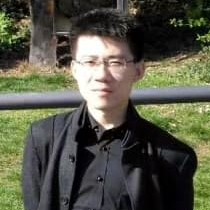Applications of Microalgae and Macroalgae in Water Treatment
A special issue of Water (ISSN 2073-4441). This special issue belongs to the section "Water Quality and Contamination".
Deadline for manuscript submissions: 10 September 2024 | Viewed by 2040
Special Issue Editors
Interests: microalgae; biomass and bioenergy; wastewater treatment; bioaerosol; microbiology
Interests: algae blooms; water resources management; eutrophication processes; water quality modeling; physical limnology
Special Issues, Collections and Topics in MDPI journals
Special Issue Information
Dear Colleagues,
Water contaminants threaten the environment and human society. Wastewater treatment and reuse are one of the solutions proposed for water-related environmental issues. Additionally, with “carbon neutralization” being proposed, new issues and challenges are evident for water treatment and reuse technologies. Macroalgae and microalgae-based technologies have been considered promising, coupling wastewater treatment and biomass production. Algae can consume undesired contaminants, e.g., carbon, nitrogen, and phosphorus, in water through their metabolism from effluents, producing carbon-neutralized biomass, e.g., carbohydrates, lipid, and protein. They are also adaptive to various types of wastewater. In this context, this Special Issue will focus on macroalgae and microalgae-based wastewater treatment technologies while highlighting the latest technology advancements. This topic welcomes high-quality research articles and state-of-the-art critical reviews.
Dr. Changliang Nie
Dr. Chenxi Mi
Guest Editors
Manuscript Submission Information
Manuscripts should be submitted online at www.mdpi.com by registering and logging in to this website. Once you are registered, click here to go to the submission form. Manuscripts can be submitted until the deadline. All submissions that pass pre-check are peer-reviewed. Accepted papers will be published continuously in the journal (as soon as accepted) and will be listed together on the special issue website. Research articles, review articles as well as short communications are invited. For planned papers, a title and short abstract (about 100 words) can be sent to the Editorial Office for announcement on this website.
Submitted manuscripts should not have been published previously, nor be under consideration for publication elsewhere (except conference proceedings papers). All manuscripts are thoroughly refereed through a single-blind peer-review process. A guide for authors and other relevant information for submission of manuscripts is available on the Instructions for Authors page. Water is an international peer-reviewed open access semimonthly journal published by MDPI.
Please visit the Instructions for Authors page before submitting a manuscript. The Article Processing Charge (APC) for publication in this open access journal is 2600 CHF (Swiss Francs). Submitted papers should be well formatted and use good English. Authors may use MDPI's English editing service prior to publication or during author revisions.
Keywords
- microalgae
- wastewater treatment
- biomass






